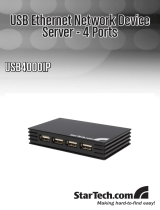
Instruction Manual
ii
Network Config ............................................................................21
User Accounts .............................................................................23
System Ident................................................................................24
Security .......................................................................................26
Compatibility ................................................................................26
RADIUS .......................................................................................27
Modem.........................................................................................28
Time/Date ....................................................................................28
Firmware .....................................................................................28
Info Functions ..............................................................................30
Status ..........................................................................................30
Port Numbers ..............................................................................31
Help Menu ...................................................................................32
Site map Menu ............................................................................32
Copyright Menu ...........................................................................32
The VNC Interface ......................................................................32
Bribar Feature .............................................................................34
VirtKeys Menu .............................................................................39
Video Tuning Menu ......................................................................40
Accessing KVM Features ............................................................. 47
OSD Operations ..........................................................................47
OSD Function Keys ....................................................................48
Using the Modem feature ............................................................. 49
Background ................................................................................49
Connecting a Modem .................................................................50
Modem configuration ..................................................................51
Configuring the Remote Connection ..........................................52
Accessing the Web Interface ......................................................53

























